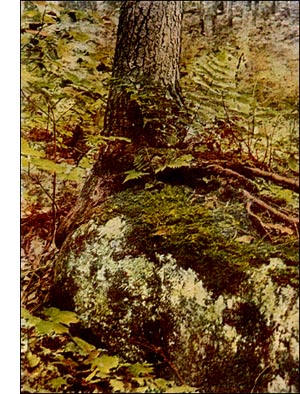Genus Phascum
 The plants of the Genus Phascum are very small with simple distinct stems. They grow in loose clusters on bare ground under old willows and along brooks and garden paths. The protonema is not persistent.
The plants of the Genus Phascum are very small with simple distinct stems. They grow in loose clusters on bare ground under old willows and along brooks and garden paths. The protonema is not persistent.The leaves are crowded, forming small heads and are lance-shaped with taper-pointed apex and a broad base with a vein extending as an awn beyond the apex. The cells are distinct and pale below, smaller and green above, sometimes with minute projecting points on one or both faces.
The spore-cases are spherical or egg-shaped with a short point or a blunt beak. They are raised on a short, erect or curved
pedicel and break irregularly and transversely for the emission of the large, rough spores, which are borne on a thick, central column (columella).
There are ten species known in all, three of them in North America. By some they are believed to be mosses in a primitive condition: by others they are believed to be degenerate forms of higher mosses.
The generic name Phascum is derived from the Greek; an ancient name for a moss. It was originally applied by Theophrastus to a lichen, Usnea barbata, and first used as a generic name for these mosses by Linnaeus in 1753. He enumerated three species, all founded on figures made by Dillenius and published in 1741. Schreber limited the name more closely to its modern sense. In a quaint little pamphlet printed in 1770, he praises the invention of lenses which make it possible to see the tiny mosses as if they were of greater stature, and says that the ancients spoke well and wisely when they said "Nature is never more perfect than in small things."
Phascum Cuspidatum Moss